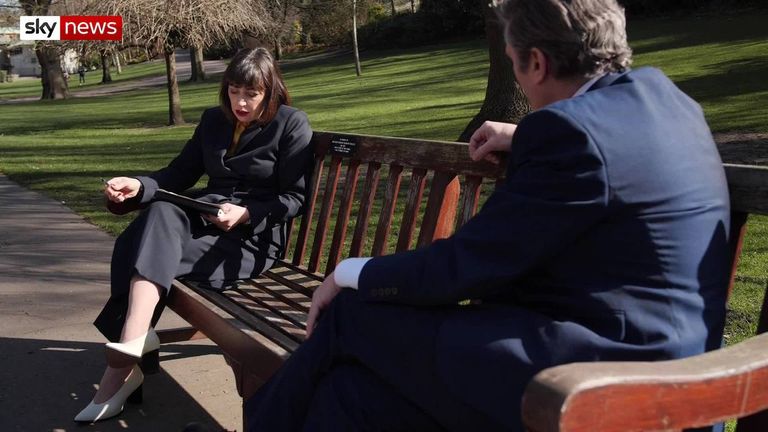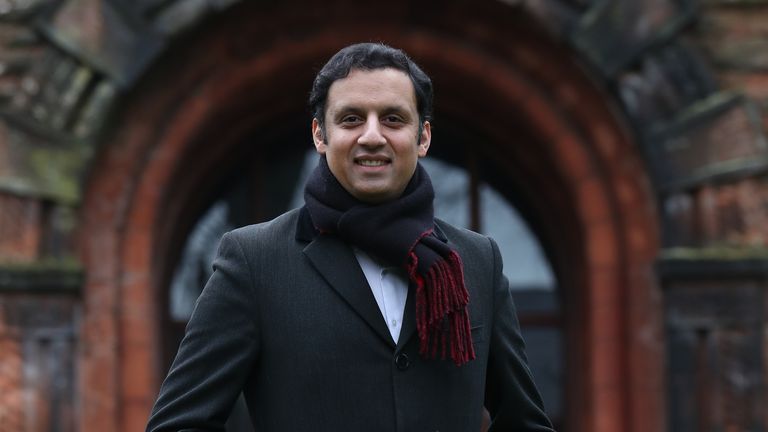This May will be, for millions of voters across England, Scotland and Wales, the first opportunity to give their verdict on Sir Keir Starmer and his relaunched Labour Party.
But less than two months out, he finds himself going into this mega set of elections with some of his worst polling since he won the leadership race back in April 2020.
Thirteen points behind the Tories in the latest national polls and his favourability ratings at their lowest point since he became leader, it helps explain why Labour‘s expectation management machine has gone into overdrive.
Earlier this month, when I asked Sir Keir what he thought progress would look like in the May elections, he told me it was going to be “tough”.
When I asked him on a visit to Edinburgh on Thursday, why he was doing so badly in the national polls, he went further, telling me Labour was facing a “very significant” vaccine bounce.
That he said it so publicly and pointedly is significant, but in truth, it’s what he’s been telling his team for months.
Opposition politics are hard at the best of times and even harder in a pandemic when the public want the government to succeed.
Sir Keir’s fortunes rose on the back of Boris Johnson‘s failures during the pandemic – be it around PPE shortages, the COVID crisis in care homes, and U-turns over lockdown policy or school reopenings – but the vaccine roll-out has changed the prime minister’s fortunes for the better.
“It saved us,” is how one senior government figure put it to me the other day. And now Labour’s bracing for it to wound Sir Keir in the May polls.
But in Scotland, Labour’s problems run far deeper than the cyclical rises and falls of political fortune.
It has been in what looks like terminal decline there for well over a decade.
Its total seat tally in every Scottish election has declined since the first one in 1999.
It has gone from being the first party in Scotland to second in 2007, and third in 2016.
Coming in behind the Conservatives, Labour won fewer than 30 seats – just 24. In the general election it won one out of 59 seats.
It matters because the only road back for a (majority) Labour government in Number 10 is through Scotland.
Labour has never won a majority in parliament without winning more than half the seats in Scotland.
With the party under new(ish) leadership in Westminster and Scottish Labour with its new leader Anas Sarwar, Sir Keir hopes the long, painstaking rebuild can really begin.
“We’ve got a mountain to climb, and I accept that, but Scotland is very important to me and the Labour Party,” said Sir Keir.
And he does hope to pick up seats, despite polling suggesting the party will lose seats, or at best hold what it’s got.
“We want to improve, we’re fighting for every vote, we’re already seeing the polls move a bit positively for us.
Drill down into Labour’s target seats and it needs at least a five percent swing (against the SNP) to gain.
But Mr Sarwar is taking the fight to the SNP, standing against Nicola Sturgeon in his home town of Glasgow.
The new Scottish Labour leader no doubt hopes that, just as fortune has favoured Mr Johnson in the run-up to these elections, the internecine conflict between Alex Salmond and Nicola Sturgeon will boost Labour, while the focus on COVID recovery might give them a hearing with voters.
The two men hope these elections will put Labour back on the map in Scotland. But as for back into power? It really is a mountain to climb.













